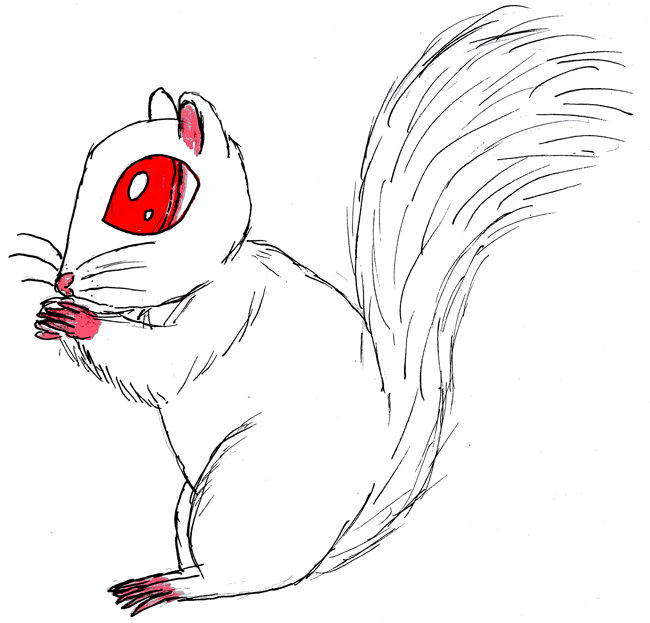There is no albino squirrel at UT. There have never been any albino squirrels at UT.
I know you probably don’t want to believe this.
According to local legend, students who see the albino squirrel are destined to ace their next exam. But the pale, furry creatures that students have believed in for generations are actually color variants of the fox squirrel, and they’re white because of a condition called leucism. If the squirrels were truly albino, they would have red eyes.
The white squirrels at UT are leucistic, which means their skin and hair lack pigment cells, according to the journal Polar Biology. Leucism affects animals at a later stage of their embryonic development than albinism would, and it does not affect a squirrel’s body beyond the skin and fur.
Albinism is a rare disorder that results from a disruption in melanin production. Melanin is a group of pigment cells that cause darker skin, and darker skin is more resistant to sun damage.
Melanin deficiencies cause genuine albino squirrels to have substantial health problems, including vision issues, hearing loss and ineffective immune systems. The white squirrels on campus don’t have these issues because their condition is only skin deep.
Fox squirrels have many different color variations. There are the white squirrels on campus,the gray squirrels that are everywhere and a darker variety that reside in colder climates.
The darker squirrels’ color is the result of hyperactive melanin. Dark coloring helps the squirrels absorb heat to conserve energy during the winter months, according to research in the journal Southeastern Naturalist. Austin’s relatively warm climate takes the pressure off white fox squirrels.
The pale UT squirrels, like many urban animals, are suited to their unusual environment — a sunny college campus. Although albino and leucistic squirrels might be more conspicuous to some types of predators in the wild, the white fox squirrels on campus are not likely to encounter these threats.
Predation causes less than 5 percent of squirrel deaths in cities. Since students consider the white squirrels to be good luck, the squirrels get food and other types of special treatment beneficial.
The pale squirrels aren’t the only animals to take advantage of human neighbors. Squirrels generally survive better in cities than in the wild.
Other animals benefit from living in populated areas, too. Crows have more successful nests in suburban areas, where they adapt to their environment by eating human waste or taking advantage of other human protections. Brown rats have thrived in cities, as well. Of course, those animals don’t quite command the status and attention of pale squirrels with legendary grade-boosting abilities.
While animals find more protection from predation and more access to food in cities, there are still risks. Although raccoons survive better in urban environments, they are at greater risk of contracting diseases such as rabies, according to the Canadian Journal of Zoology. Similar to humans, animals have higher population densities in cities, where infections quickly spread from one animal to another.
Here’s the good news, superstitious readers: Although there are no true albino squirrels on campus, spotting a white squirrel might still give you the confidence boost you need to ace an exam.
After all, despite their limited camouflage skills, these leucistic squirrels are still around. They’ve passed the test of time, so maybe you’ll pass your exams, too.





















